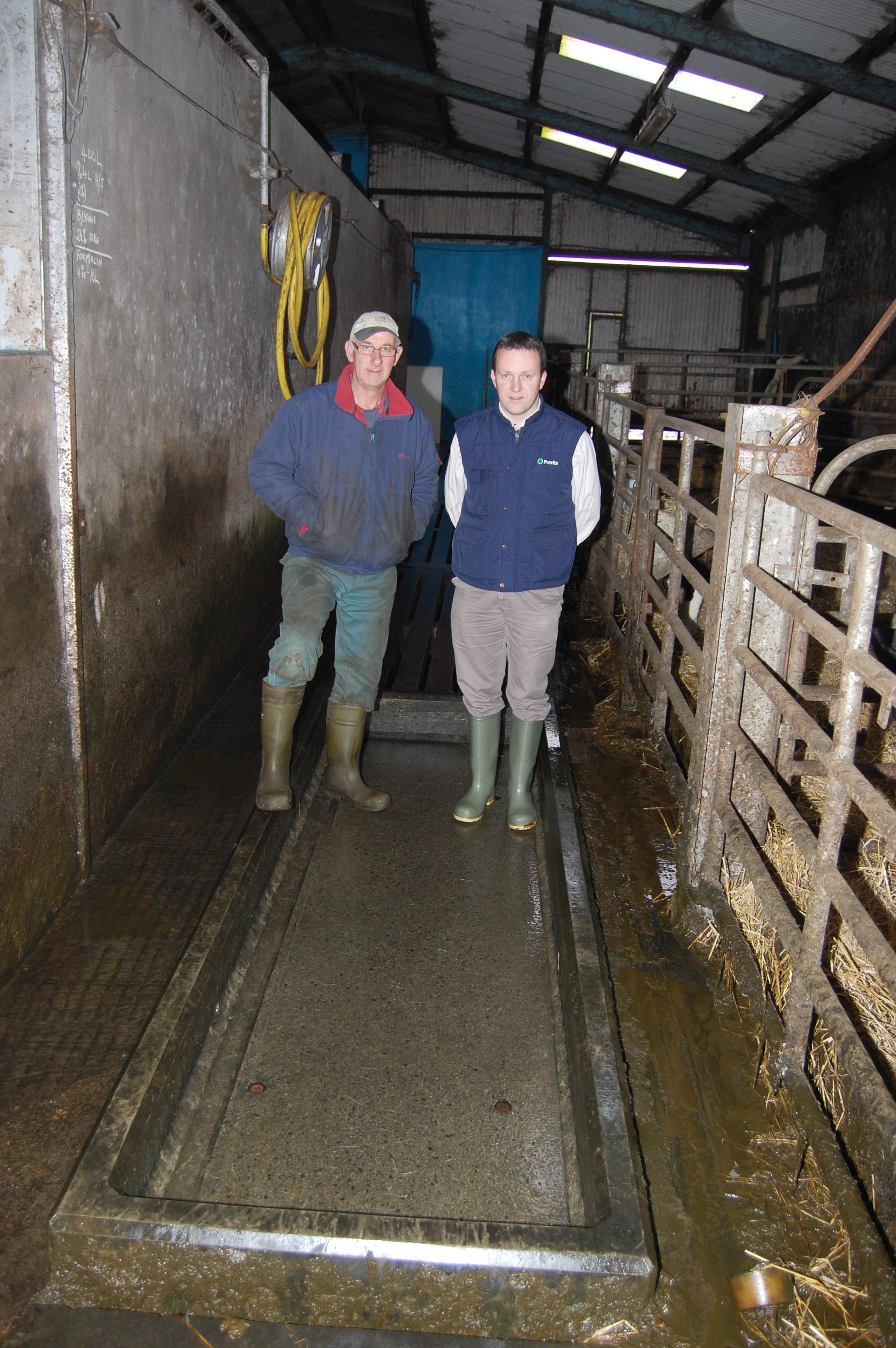The combined approach of foot bathing after every milking and the inclusion of Provita’s Hoofsure Endurance in the foot bathing solution has allowed Ballymoney dairy farmer Brian Knipe and his father Alfie to reduce the levels of lameness within his 100 strong cow dairy herd by almost 50%.”
“I am delighted with the results obtained by putting an increased emphasis on foot bathing,” Brian continued.
“I have the facilities to regularly trim the cows’ hooves myself on farm. But even with this lameness issues had persisted within the herd.
“I had known for some time that increasing the frequency of foot bathing would be required if we were ever to get on top of the problem: the challenge was working out the best way to make this happen without putting additional stress on me and the other people working on the farm.”
Earlier this year the answer to Brian’s problems came in the shape of a Moore Concrete precast concrete footbath, which was set into the floor of the cubicle house on the farm. Brian takes up the story.
“It was simply a case of taking up a gang slat and replacing it with the bath. It is located in a passageway which the cows must walk down directly after exiting the milking parlour.
“The bath, which is two metres long and 1 metre wide can be emptied in seconds, simply by removing the bung. The contents of the bath simply drop down into the slurry tank below. After scraping out the sediment left in the bottom of the bath, it can be quickly filled again with a power hose which is nearby.
“The passage is sufficiently narrow to ensure that all the cows must walk through the bath after milking. What’s more, there is no pressure on the cows: they can walk through the footbath solution at their own pace.”
“The footbath has an internal depth of around 8 inches. We normally fill it to a depth of 6 inches. This ensures that the solution gets to all the relevant parts of the cows’ hooves while none of it is wasted through splashing and overflows. The solution in the footbath is changed every four to six milkings, depending on the number of cows walking through it on a daily basis.
Provita’s Tommy Armstrong was a recent visitor to the Knipe farm. He commented:
“Brian has come up with a very effective solution to the challenge of ensuring that cows are foot bathed after every milking. Veterinarians now regard digital dermatitis and other related issues as being akin to ‘mastitis of the feet’. Farmers will always dip their cows’ udders after every milking to prevent mastitis. So it is important to make the same level of commitment when it comes to keeping lameness issues at bay!
“The Moore foot bath works well as it is the right length, width and depth. In addition, the bevelled edges ensure that the cows do not hurt their feet as they walk through it.”
Tommy continued:
“Brian has also installed a footbath adjacent to the drinker in his dry cow house. This ensures that they too are being foot bathed on a regular basis. It is also his intention to repeat this approach in all the other sheds on the farm.
“Research has shown that if dairy farmers want to get on top of lameness problems, such as digital dermatitis, they must footbath all the relevant stock on the farm. And this includes the milking group, dry cows and in-calf heifers.”
Brian Knipe concluded:
“Buying the footbath, placing it adjacent to the milking parlour and using it every milking was one of the best investments made on the farm!”
